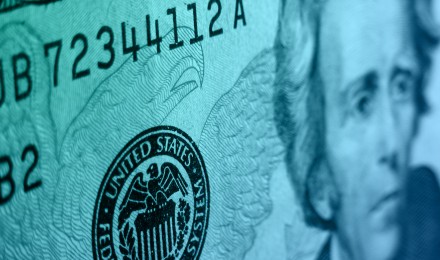On Monday, November 18th the week began with a smile in the real industry. The National Association of Realtors (NAR) reported that existing home sales advanced by 2.1 percent to a seasonally adjusted number of 4.79 million homes.
Both Reuters and Bloomberg expert panels predicted that existing home sales would increase to 4.75 million home sales.
Lawrence Yun, an economist with the National Association of Realtors said that the violent superstorm Sandy that had walloped the East Coast in late October had “only a slight impact” on existing home sales. Nevertheless, the Northeast alone was the only region in the United States where sales fell than rather than rose for home resales. According to Yun the storm most likely will stifle the Northeast region resales for November and December.
Data collected from contracts that closed show that the median price for an existing home increased by 11.1 percent from a 12 months ago – it is $176,000. One reason for this large increase is that less homes were sold under distressed conditions. The NAR includes foreclosures as part of distressed sales.
The report also showed that the country’s inventory of existing fell by 1.4 percent in October to 2.14 million. This is the lowest level since December of 2012. Should the current sales rate continue, the supply would be depleted in under six months, in 5.4 months which is the smallest existing home inventory since February 2006.
Distressed sales in October 2011 accounted for 28 percent of all existing homes, a year later the NAR reports that number is below ¼ of existing home sales at 28 percent.
Economists and industry experts say that there are three major reasons for the surge in existing home sales:
- Lowest mortgage rates on record
- Less expensive properties
- Rising consumer sentiment
The improved October sales are a reminder of Federal Reserve Chairmen Ben Bernanke statements that these “signs of improvement” occurred in a lending atmosphere governed by strict bank lending policies.
One Wall Street economist remarked:
“Housing’s cheap, borrowing is cheap and, if you can get credit, it’s a great time to buy, we’re fighting our way through distressed-property sales.”
Sales of multifamily properties which includes condominiums rose by 20,000 to an annual rate of 550,000. Although sales fell by 1.7 percent in the Northeast, the three other regions of the nation saw sales growth:
The West – +4.4 percent
The Midwest – +1.8 percent increase
The South – +1.8 percent increase
In a statement from Freddie Mac lower borrowing rates are feeding sales fever for those who qualify for financing. They report that the average rate for a 30-year fixed rate mortgage fell last week to 3.34 percent. This is the lowest rate in data dating all the way back to 1972.
As housing is a major indicator of economic health it is apparent that the sluggish US recovery continues.
On Monday, November 18th the week began with a smile in the real industry. The National Association of Realtors (NAR) reported that existing home sales advanced by 2.1 percent to a seasonally adjusted number of 4.79 million homes.
Both Reuters and Bloomberg expert panels predicted that existing home sales would increase to 4.75 million home sales.
Lawrence Yun, an economist with the National Association of Realtors said that the violent superstorm Sandy that had walloped the East Coast in late October had “only a slight impact” on existing home sales. Nevertheless, the Northeast alone was the only region in the United States where sales fell than rather than rose for home resales. According to Yun the storm most likely will stifle the Northeast region resales for November and December.
Data collected from contracts that closed show that the median price for an existing home increased by 11.1 percent from a 12 months ago – it is $176,000. One reason for this large increase is that less homes were sold under distressed conditions. The NAR includes foreclosures as part of distressed sales.
The report also showed that the country’s inventory of existing fell by 1.4 percent in October to 2.14 million. This is the lowest level since December of 2012. Should the current sales rate continue, the supply would be depleted in under six months, in 5.4 months which is the smallest existing home inventory since February 2006.
Distressed sales in October 2011 accounted for 28 percent of all existing homes, a year later the NAR reports that number is below ¼ of existing home sales at 28 percent.
Economists and industry experts say that there are three major reasons for the surge in existing home sales:
- Lowest mortgage rates on record
- Less expensive properties
- Rising consumer sentiment
The improved October sales are a reminder of Federal Reserve Chairmen Ben Bernanke statements that these “signs of improvement” occurred in a lending atmosphere governed by strict bank lending policies.
One Wall Street economist remarked:
“Housing’s cheap, borrowing is cheap and, if you can get credit, it’s a great time to buy, we’re fighting our way through distressed-property sales.”
Sales of multifamily properties which includes condominiums rose by 20,000 to an annual rate of 550,000. Although sales fell by 1.7 percent in the Northeast, the three other regions of the nation saw sales growth:
The West – +4.4 percent
The Midwest – +1.8 percent increase
The South – +1.8 percent increase
In a statement from Freddie Mac lower borrowing rates are feeding sales fever for those who qualify for financing. They report that the average rate for a 30-year fixed rate mortgage fell last week to 3.34 percent. This is the lowest rate in data dating all the way back to 1972.
As housing is a major indicator of economic health it is apparent that the sluggish US recovery continues.







